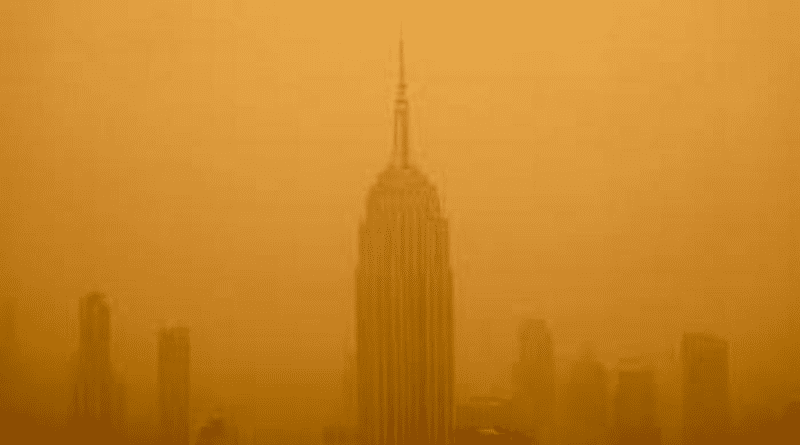World’s Biggest Study Of Wildfire Smoke Impact Reveals Alarming Long-Term Health Impacts
As North America recovers from some of the worst air quality in decades due to wildfires, one of the largest and most comprehensive studies into the long-term health impact of smoke exposure raises significant concerns about the long-term health impact of the Canadian wildfires.
The study found that a 10 μg/m3 increase of wildfire-related PM2.5 exposure was associated with a 0.4% higher risk of all-cause and nonaccidental mortality, and a 0.5% increase in risk of dying from neoplasms. On June 8, at the peak of the wildfire pollution, levels of PM2.5 reached 460 μg/m3
The research, led by researchers at Monash University in Australia and published in the Journal of Hazardous Materials, is the first to look at the relationship between long-term exposure, with a 11 years follow-up, to wildfire-related fine particulate matter (PM2.5) and mortality.
Importantly the study found no significant associations of wildfire-related PM2.5 exposure with mortality from cardiovascular, respiratory, and mental diseases.
To date, studies into the health impacts of wildfire-related PM2.5 exposure have shown an increased risk of all-cause, cardiovascular and respiratory mortality, however, according to lead researcher Associate Professor Shanshan Li, from the School of Public Health and Preventive Medicine, most of the evidence focused on short-term impacts. “We aimed to estimate the long-term impacts of wildfire-related PM2.5 exposure on mortality in adults using a large-scale national cohort database from the UK Biobank,” she said.
“To the best of our knowledge, this is the first population-based prospective cohort study to quantify the associations between long-term exposure to wildfire-related PM2.5 and mortality.”
The data came from a subset of the UK Biobank, involving 492,394 participants enrolled from 2004 to 2010, that are followed up regularly in the UK, collecting biological samples, surveys regarding lifestyle – all of which was then linked to their health-related records. The researchers then extracted mortality data, including underlying (primary) cause of death and date of death, which was mapped to wildfire-related PM2.5 exposure 1 to 5 years before death.
According to Associate Professor Li, the study’s findings “show that wildfire-related PM2.5exposure has long-lasting adverse impacts on all-cause, nonaccidental, and neoplasm mortality.”
“Given the recent pollution levels in North America caused by the Canadian wildfires, our study linking long-term exposure to wildfire-related PM2.5 and mortality suggest that further research is urgently needed to provide more scientific evidence on this topic.”

